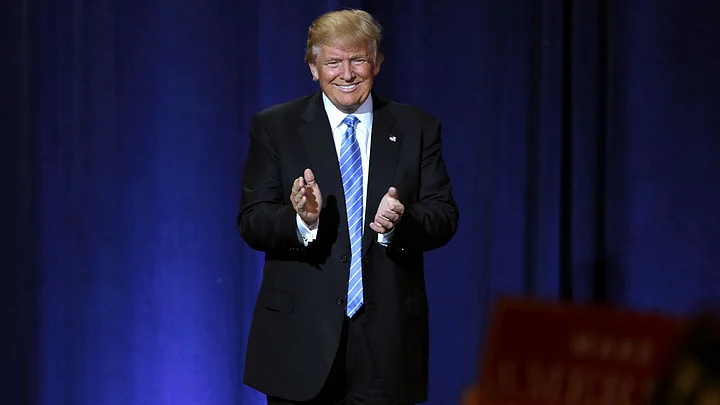US President Donald Trump on Friday, 15 February, declared a national emergency over the issue of building a wall at the US-Mexico border. The Democrat-majority Congress had refused to release funds for the wall’s construction, and Trump’s bold move could now allow him to get the funding barring legal challenges. Previously, the US government had been shut down over impasse on the same issue.
The move to declare emergency has triggered uproar, with the Opposition calling it a “fake Trump emergency” and many considering it a bold political move to deliver on his central 2016 campaign promise. Rather than an indication of any actual emergency, the Opposition has contended that there is no migration crisis at the Mexican border, a BBC report stated.
But declaring emergency is not as big a deal as it may seem – there have been over 50 national emergencies declared since 1976, according to a report from Pacific Standard. Trump’s emergency would be the 59th, and there are still over 30 currently active that were never officially called off. Here are some notable ones:
National Emergency 1979: Iran Hostage Crisis.
The emergency declared by then US President Jimmy Carter was the first since the National Emergency Act of 1976 was signed. The 1976 Act ended all emergencies prior to that year and allowed the president of the United States to exercise executive powers during an emergency.
When the Iranian Shah, supported by the US, was forced out of power from Tehran in the 1970s, the Iranian revolutionaries captured over 50 Americans.
The situation prompted Carter to call a national emergency. The emergency declared in 1979 is still active today.
National Emergency 2001: Export Control Regulations
Even with the emergence of major trade deals such as the North American Free Trade Agreement (NAFTA) and the Trans Pacific Partnership (TPP), the national emergency declared in 2001 with regards to export regulations is still in place.
With the Export Administration Act of 1979 expiring, the US administration was about to lose major decision-making capabilities in the trade sector. Seeing this as a threat, then President Bill Clinton declared an emergency in 2001. US saw this as a way to get a grip on the international trade pricing caps, which would have dispersed if the 1979 Act would have lapsed without the introduction of an executive order signed during emergency.
The Federal Register to the United States Government has been renewing the order on a yearly basis in order to regulate imports and exports.
National Emergency 2003: Protecting Development Fund for Iraq
With respect to the 2003 Iraq invasion, former US President George Bush declared a national emergency to protect funds for the development of Iraq after the invasion and any other properties that may be of interest to the Iraqi people.
In 2018, former Iraq Prime Minister Haider al-Abadi said in an interview to Time magazine that he was “not calling for the US forces to stay in Iraq.” But he would not like them to leave the job unfinished and his country in chaos.
The emergency is still active today and has been renewed every year by presidents who have held office after Bush.
National Emergency 2008: Continuing Restrictions with North Korea
US declared a national emergency in 2008 due to alleged proliferation of nuclear weapons in North Korea. The administration saw this as a threat to US security.
An official statement from the White House said that due to the presence of nuclear weapons on the Korean peninsula, certain restrictions and exceptions will have to be maintained, which would have been lifted if Proclamation 8271 (that prohibited trading with a State that was listed as an enemy of the US) would have been put in place.
Since the declaration of the emergency in 2008 by then President George Bush, the executive order signed with respect to North Korea has been renewed every year since its introduction and still remains active.
National Emergency 2018: Foreign Interference in a United States Election
President Donald Trump declared a national emergency after reports of foreign meddling in the US presidential elections, the White House said.
Having seen his son-in-law Jared Kushner being accused of using means to help foreign governments meddle in the presidential election, Trump’s decision came as a surprise for many.
During the emergency, he ordered heavy sanctions on any foreign entity that would try and interfere with American elections, reported Reuters. The order, which was signed in 2018, will come into re-consideration a year after it lapses.
(With inputs from Time, Reuters and BBC)
(At The Quint, we question everything. Play an active role in shaping our journalism by becoming a member today.)
